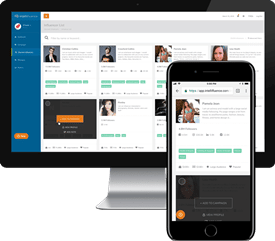Last Updated on July 17, 2020
Before you can attempt to optimize your influence online, make sure that you first understand where you want to be visible and what your main focus will be. The analogy I like to use here is attempting to pick out the perfect pair of shoes without first understanding what activity and what occasion the shoes are for —ok, I know nothing about shoes, but I’m pretty sure buying Italian loafers for a marathon isn’t a great idea.
Why Optimize?
Maximizing your influence isn’t just about trying to get discovered for high value phrases such as ‘fashion’ or ‘cosmetics’ — vanity phrases are great, just like in SEO, but as you can see in this article by Catalin Zorzini just like in SEO there’s a lot more to it. If you want my opinion on his comparison: Ahrefs + SpyFu is a great combination; I personally use them for my marketing projects, and would suggest that when doing keyword research that you should as well.
If you optimize your organic content to trending topics within your niche and subsection focus, you will appear more authentic than someone that is reviewing everything and anything related to fashion or all cosmetics.
How-to Optimize, by Network
It is a lot easier to simply tell an influencer to hyper focus than it is to explain how, so let’s explain how, making the assumption that you’re a somewhat new cosmetics blogging influencer. The how-to isn’t just about how to go viral, though following some of the advice from Austin Iuliano will certainly help to boost your overall visibility.
Facebook — let’s start with Anne DiVitto’s piece on 4 ways to use Facebook trending. One method in Facebook trending would be to hashtagjack, meaning to find a trending topic that you could possibly weigh in on related to your niche, using the trending hashtag; using this tactic your message will be exposed to many more people that are actively consuming that specific trending news. Another more nuanced method involves searching on the vanity hashtag phrase first, like #cosmetics and exploring the other tags commonly used in conjunction with that main phrase. Since in this example you are a newish cosmetics blogger, #beautyblogger may be even more relevant. Do you have a dedicated blog for this? #beautyblog and other variations make sense to focus on for optimized discovery purposes.
LinkedIn — there was a recent post on LinkedIn Pulse by Larry Kim, which was once a great method to maximize spread on LinkedIn Pulse. LinkedIn recently made some changes though, so now content posting is more about enticing people to follow/friend you. All of Larry’s advice for titles and imagery apply here; additionally, if you are looking to hyper focus, use another network like Facebook or Twitter to first determine the more focused hashtags that are in use, and then create pieces surrounding those phrases to highlight on your personal profile — then search for those phrases, adding professional connections that closely match those searches; since you are going to appear more relevant with content that matches their profile, the acceptance ratio will be higher.

Twitter — it is in vogue to hate on Twitter lately. Some, such as by Scott Kleinberg with his piece on the disappointment of Twitter Moments is justified. In it he shows that Twitter Moments could have been significantly more powerful than Facebook’s trending feature, if implemented corrected. Even as a somewhat broken product though, there is significant value in hashtag jacking through the same mechanism. As I write this article, one of the trending stories is on “The Bachelor fans are in love with Rachel” — it would be fairly easy to tweet in those moments and put on a cosmetics spin to make the content appear relevant and turn it into a new moment as well. The moments jacking concept is an underused method, but another can bring you further optimized focus. Twitter offers a more searchable trending than Facebook at https://twitter.com/search-home — the top trends show, but if you were to search for ‘cosmetics’ many top and latest tweets show with a multitude of fantastic hashtags for you to start using that might be more specific to your focus. Since Twitter is constrained to 140 characters, users have to be judicious in which tags to use, so the niche tags you see are more likely to be useful.
Instagram — Want to get nerdy with me? The Instagram Engineering team shared how trending works on Instagram. It’s the technical methodology behind how trends are sourced; I absolutely love that stuff, but…too much math? Ok. Finding a trend to attach yourself to on Instagram is like a cross between Twitter and Facebook. On the search feature, you’ll notice that live videos are given preference — keep this in mind as you are building content here, as both Facebook and Instagram are overweighting algorithmically towards “live” content. In that search feature, if you search for ‘cosmetics’ you’ll see a mix of tags and accounts to follow, but if you select Tags everything will become clear, where tags even have post statistics to help you make your choices. This may seem a lot like Twitter, but where the Facebook likeness comes in is you’ll need to follow/comment and use those chosen tags as described in our first article on the series governing visibility; also like Facebook the message sizes aren’t as limiting, so more hashtags can be used for message spread.
Pinterest — if there ever were a network for you my new cosmetics blogger, it is Pinterest. It doesn’t take long to find posts like this by Tony Yeung that highlight the types of material that trends of Pinterest within the fashion and beauty niches. Pinterest goes so far as to even provide fantastic trend predictions for its users; since you’re in beauty look at pages 11–20; as you can see, it is slightly different than Twitter type trends where the trends are extremely focused. I won’t pretend to understand what jojoba oil and ash balayage are, but if you are able to break into these subset niches by producing content around them, you could use that sourced material up elsewhere on Twitter, where hashtags are at a premium, to become an optimized expert. For those of us not in cosmetics or fashion, there’s of course a lot more happening on Pinterest to help you source popular material the way Twitter Moments should probably work. Of course, it still skews towards fashion, cosmetics, fitness, and food/drink, but if you’re in those niches it provides for massive exposure that can be optimized.
YouTube — YouTube is kind enough to provide trending searches for finding trending videos, which for the most part are likely to be as relevant as Twitter Moments — if you can quickly produce material related to these videos that matches your niche, you can garner some attention, but a better method is to simply perform a search for the main phrase (or optimized phrases if you already have them). Videos are ranked by a mix of recency and engagement (likes/subscribes/comments), so the best material is right in front of you. Trolling through the top 5 videos in cosmetics, not only do I realize I’m woefully unaware of how products are supposed to be used in conjunction with each other, but I can see that the better videos take extra effort to provide additional details in the show notes and provide descriptive titles. Similar to Instagram, you’ll want to use similar language and terms in order to be able to show, but unlike Instagram there’s really no reason to use hashtags.
Keep Optimizing and Stay Focused
Typing back to the initial plea of hyper focusing, the above should help you understand how to go about optimizing for specific content, beyond the spray and pray that I see occurring in the cosmetics and fashion industry amongst newer influencers. If you can really focus and show yourself an expert on a sub niche, you can make a name for yourself, and with that will come the opportunities and money you deserve.

Joe, CEO and Co-Founder of Intellifluence, has over 25 years of experience in SEO, leading several successful marketing companies and providing expert consultation. He is the author of The Ultimate Guide to Using Influencer Marketing, which is available as an eBook or in print.






